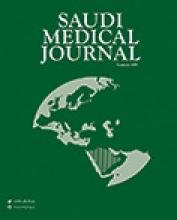Abstract
OBJECTIVE: To optimize the model of abdominal aortic aneurysm (AAA) in rats using calcium chloride (CaCl2) and collagenase together.
METHODS: This study was performed at the 9th People's Hospital, Institute of Traumatic Medicine, Shanghai Jiao Tong University, School of Medicine, Shanghai, China from July 2008 to February 2009. Aortas of 55 adult male Sprague-Dawley rats were exposed and incubated for 20 minutes with fresh normal saline solutions supplemented with CaCl2 (0.4M) and collagenase (4%, w/v) (group A), CaCl2 alone (group B), collagenase alone (group C), or normal saline alone (group D). After 4 weeks, the treated aortas were evaluated by digital measurement, angiography, and histological examination.
RESULTS: In group A, there was a mean increase in diameter of 87.86% ± 69.49% (range, 35.33-299.29%) weeks after surgery. The frequency of AAA in this group was 83.3% (10/12). One (1/13) AAA occurred in group C and none in other groups. Partial endothelial loss, elastin disruption, and abnormal collagen deposition were noted in the AAA tissues in group A, corresponded well to native aneurysms in human.
CONCLUSION: The use of collagenase optimized the established CaCl2-induced rat model, giving a high frequency of AAA in a short period of time.
- Copyright: © Saudi Medical Journal
This is an open-access article distributed under the terms of the Creative Commons Attribution-Noncommercial-Share Alike 3.0 Unported, which permits unrestricted use, distribution, and reproduction in any medium, provided the original work is properly cited.






